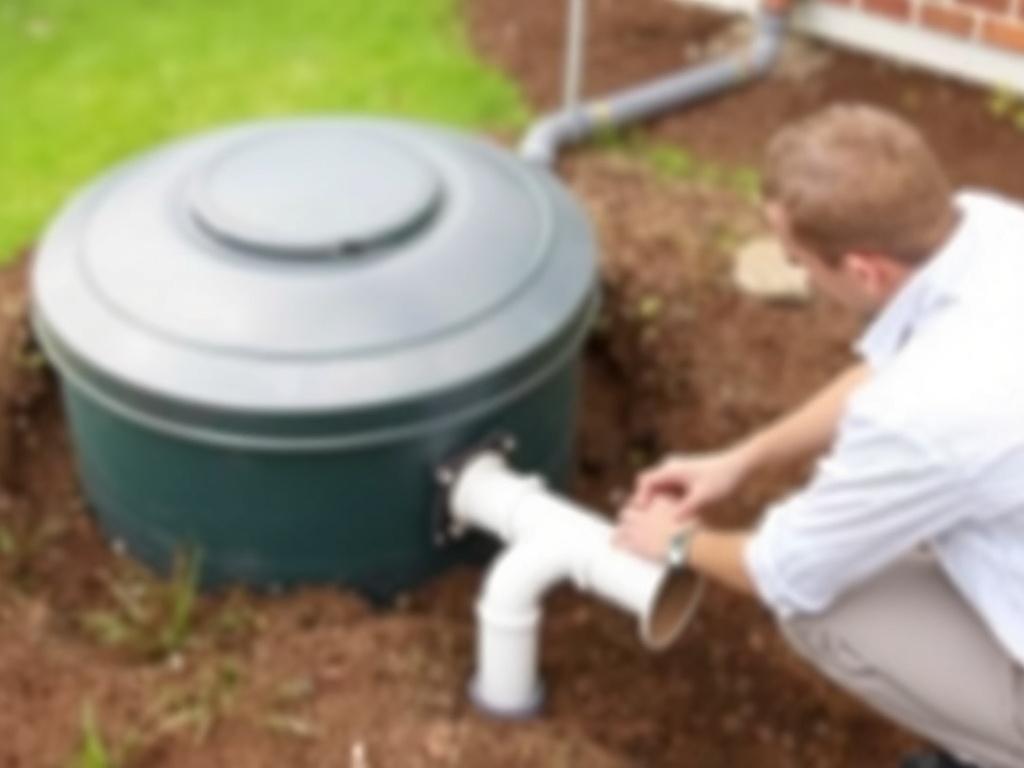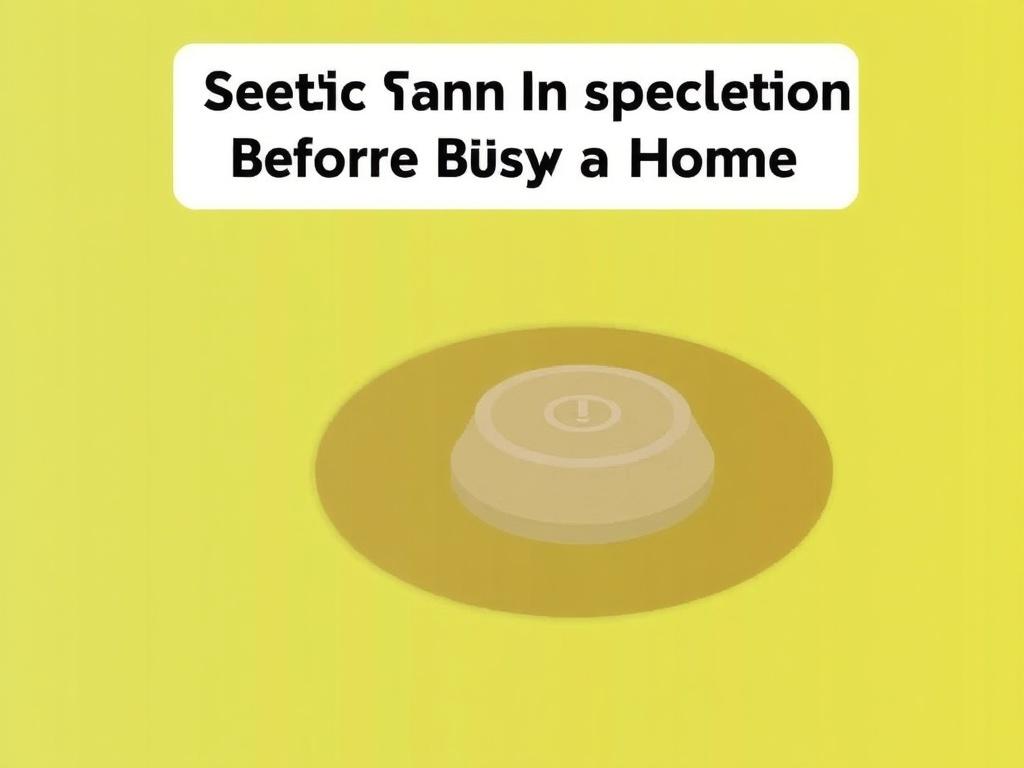Buying a home is one of the most significant investments you’ll make in your lifetime. Whether it’s a cozy bungalow in the countryside or a charming house in a quiet suburb, ensuring everything is in proper order before closing the deal is essential. One often overlooked aspect of a property inspection is the septic tank system. If the home you’re considering uses a septic system rather than being connected to a municipal sewage system, a septic tank inspection before buying a home is absolutely essential. This simple step can save you thousands of dollars and prevent headaches down the road.
Many homebuyers don’t realize the importance of a thorough septic tank inspection before buying a home. Septic systems, when functioning properly, quietly and efficiently manage wastewater from your household. However, problems with septic tanks can lead to costly repairs, unpleasant odors, and even health hazards. Ensuring the septic system is in good condition is especially vital with older homes or rural properties, where septic tanks are the norm rather than the exception. In this article, we’ll walk you through everything you need to know about septic tank inspections before buying a home, from understanding the system itself to what to expect during an inspection and how to interpret the results.
- Understanding Septic Systems: The Basics
- Common Types of Septic Systems
- Why Is a Septic Tank Inspection Before Buying a Home So Important?
- 1. Prevent Costly Repairs and Replacements
- 2. Protect Your Health and Environment
- 3. Negotiate Better With the Seller
- 4. Understand Ongoing Maintenance Needs
- What Happens During a Septic Tank Inspection Before Buying a Home?
- Who Should Conduct the Septic Tank Inspection?
- Signs of Potential Septic Tank Issues to Watch For When Buying a Home
- How to Read and Understand Your Septic Tank Inspection Report
- Maintenance Tips After the Septic Tank Inspection
- Costs to Consider for Septic Tank Inspections and Maintenance
- Questions to Ask Your Septic Inspector Before Buying a Home
- Understanding Local Regulations and Permits
- Septic Tank Inspection and Home Financing
- DIY vs. Professional Septic Tank Inspection: Pros and Cons
- Conclusion
Understanding Septic Systems: The Basics

Before diving into septic tank inspections, it’s helpful to understand how these systems work. A septic system is an underground wastewater treatment structure commonly used in rural areas without centralized sewer systems. The main components of a septic system include the septic tank, the drain field (also called leach field), and the soil.
The septic tank is a buried, watertight container usually made of concrete, fiberglass, or polyethylene. It holds wastewater long enough to allow solids to settle down as sludge while oil and grease float to the top as scum. The middle layer, consisting of relatively clear water, then flows into the drain field, where it seeps into the soil and eventually evaporates or is absorbed by groundwater.
Common Types of Septic Systems
It’s worth knowing that septic tanks come in various types, which might influence inspection needs and maintenance.
- Conventional Systems: The most common type, consisting of a single septic tank and a drain field.
- Chamber Systems: Uses chambers instead of gravel in the drain field, allowing for better wastewater flow.
- Drip Distribution Systems: Distributes septic tank effluent through small tubes buried near the surface.
- Sand Filter Systems: Uses sand to filter effluent before it reaches the drain field; used in areas with poor soil conditions.
- Holding Tanks: A temporary solution; stores wastewater until it can be pumped out regularly.
Knowing the type of septic system the home has is a vital step in the inspection process, as certain types may require special attention or maintenance strategies.
Why Is a Septic Tank Inspection Before Buying a Home So Important?

Septic tanks aren’t like regular plumbing repairs — when they break down, the consequences can be extreme and expensive. Unlike being connected to a city sewer, where the municipality handles the treatment of your wastewater, a septic system is your responsibility, and any problems fall squarely on your shoulders. Here’s why a septic tank inspection before buying a home is a must-do for every buyer:
1. Prevent Costly Repairs and Replacements
A failing septic system can cost tens of thousands of dollars to repair or replace. Locating problems early through a septic tank inspection could save you from being blindsided by costly repairs after you move in. For example, repairing a drain field typically costs more than replacing the septic tank itself and can take weeks or months.
2. Protect Your Health and Environment
A malfunctioning septic system can leak harmful bacteria, viruses, and nitrates into groundwater and nearby surface water, contaminating wells and streams. This contamination poses serious health risks to you and your neighbors. Conducting a septic tank inspection before buying a home helps ensure your future home doesn’t have environmental or health hazards lurking underground.
3. Negotiate Better With the Seller
If the inspection uncovers problems, you have leverage during negotiations. You might get the seller to fix the system, reduce the sale price, or contribute credits for future repairs. Without a septic tank inspection, you have no way of knowing if you’re inheriting a ticking time bomb in the yard.
4. Understand Ongoing Maintenance Needs
Some septic systems require more maintenance than others, and knowing upfront what kind of upkeep will be needed is important for budgeting and decision-making. A professional septic inspection will provide detailed information about the system’s condition and recommended maintenance schedules.
What Happens During a Septic Tank Inspection Before Buying a Home?
Now that you know why a septic tank inspection before buying a home is so critical, let’s explore what to expect during the process. A certified septic inspector will perform a detailed evaluation, which typically includes the following steps:
| Inspection Step | Description |
|---|---|
| Locate the Septic Tank and System Components | The inspector will first locate the septic tank, distribution box, drain field, and any other parts of the system. |
| Measure the Effluent Levels | The inspector opens the tank to check the liquid level to make sure it’s normal. Abnormal levels can indicate blockages or leaks. |
| Pump the Tank (if necessary) | Often, the septic tank is pumped out so the inspector can look inside the tank’s walls, baffles, and bottom for cracks or leaks. |
| Assess the Condition of the Tank | The inspector checks for structural damage, corrosion, and signs of wear or leaks in the tank itself. |
| Inspect the Drain Field | The inspector walks the drain field to look for signs of failure like soggy, lush grass or odors, which might demonstrate system overload or failure. |
| Review Records and Permits | The inspection usually involves reviewing past maintenance records and local permits to verify the system’s history and legality. |
| Perform Water Flow and Dye Tests | In some cases, inspectors use dye tests to trace effluent flow or water flow tests to verify system performance. |
Who Should Conduct the Septic Tank Inspection?
Always hire a licensed, experienced septic system professional to conduct the inspection. A qualified inspector will understand the nuances of different systems and local regulations. Avoid relying solely on a general home inspector, who may not have the specialized knowledge needed for a thorough septic evaluation.
Signs of Potential Septic Tank Issues to Watch For When Buying a Home
While a professional septic tank inspection before buying a home is the definitive way to assess the system, you can also watch for visible signs that hint at septic problems before the inspection even takes place:
- Unpleasant Odors: Smelling foul sewage odors near the septic tank, drain field, or inside the home can be a warning signal.
- Slow Drains and Toilet Backups: Frequent backups or slow draining sinks and toilets often point to septic system trouble.
- Wet Spots or Lush Grass in the Yard: Areas with abnormally green or soggy grass above the drain field could indicate effluent surfacing due to failure.
- Algae Growth in Nearby Ponds: Excess nutrients from a failing septic system can cause algae blooms in nearby water bodies.
- Previous Repairs or Add-Ons: History of septic system repairs might suggest ongoing issues or a system nearing the end of its lifespan.
Noticing any of these signs should make you even more determined to perform a septic tank inspection before buying a home.
How to Read and Understand Your Septic Tank Inspection Report

After the inspection, you’ll receive a detailed report. Understanding the findings is critical so you can make informed decisions. Here’s a simple guide to help you decode the report:
| Report Term | Meaning | Action Needed |
|---|---|---|
| Pass/Good Condition | The system is functioning and no repairs are needed at this time. | Schedule routine maintenance and pumping every 3-5 years. |
| Minor Repairs Needed | There are small issues such as worn baffles or minor cracks that require attention. | Request that repairs be addressed before closing or factor repair costs into the sale. |
| Fail/Needs Replacement | The system is failing and may require substantial repair or full replacement. | Negotiate with the seller to fix the system or consider walking away from the purchase. |
| System Requires Pumping | The septic tank is full of sludge and scum and needs to be pumped out immediately. | Arrange for pumping before you move in or before closing. |
If the report mentions specific issues or recommendations, ask the inspector for clarification about potential costs and timelines for repairs.
Maintenance Tips After the Septic Tank Inspection
Once you’ve bought a home and ensured the septic system is in good shape, maintaining it is crucial for its longevity. Here are some easy tips to keep your septic system healthy:
- Regular Pumping: Pump the tank every 3-5 years to prevent buildup of solids.
- Water Conservation: Use water efficiently to reduce the load on the system.
- Avoid Harsh Chemicals: Don’t pour paints, solvents, or antibacterial cleaners into the drain.
- Proper Landscaping: Keep trees and shrubs away from the drain field to avoid root damage.
- Don’t Overload the System: Spread out laundry and dishwasher loads to prevent overwhelming the tank.
Costs to Consider for Septic Tank Inspections and Maintenance
Being financially prepared helps set expectations. Here’s a rough breakdown of typical costs related to septic systems when buying a home:
| Service | Estimated Cost | Notes |
|---|---|---|
| Septic Tank Inspection | $300 – $500 | Price varies by region and system complexity. |
| Septic Tank Pumping | $250 – $400 | Needed every 3-5 years, depending on tank size and use. |
| Minor Repairs | $200 – $1,000 | Replacements of baffles, risers, minor component fixes. |
| Drain Field Repair or Replacement | $3,000 – $15,000+ | Costs vary widely depending on soil and system. |
| Full Septic System Replacement | $10,000 – $25,000+ | Depends on local codes, tank size, and soil conditions. |
Questions to Ask Your Septic Inspector Before Buying a Home
To get the most from your septic tank inspection before buying a home, prepare some questions in advance. The inspector’s answers will provide valuable insight and peace of mind.
- How old is the septic system, and what is its expected lifespan?
- When was the last time the tank was pumped or maintained?
- Are there any signs of current or past problems with the system?
- Does the system comply with local health and environmental regulations?
- What kind of maintenance schedule do you recommend?
- How much might typical repairs or replacements cost in this area?
- Would you recommend any further testing or monitoring?
Understanding Local Regulations and Permits
Septic system regulations vary widely by state, county, and municipality. Before purchasing a home, familiarize yourself with local restrictions and permitting requirements. Some jurisdictions require a septic tank inspection before a property can be sold. Others may require permits for any repairs or replacements.
Finding out about these regulations early on can save time and hassle later. Your septic inspector or a local health department can be valuable resources for this information.
Septic Tank Inspection and Home Financing
Another important consideration is how a septic tank inspection before buying a home might affect your mortgage or financing options. Many lenders require proof of a functional septic system before approving loans for homes not connected to municipal sewer lines. A failed septic inspection can delay or derail your financing, so addressing septic issues early is crucial.
If the inspection reveals problems, your lender might require the repairs be made before closing or set aside contingency funds in escrow. Understanding these implications helps you plan your home buying timeline and budget.
DIY vs. Professional Septic Tank Inspection: Pros and Cons
Some buyers might wonder if they can perform a septic tank inspection themselves to save money. While basic visual checks can be done, a professional septic inspection offers superior benefits.
| Aspect | DIY Inspection | Professional Inspection |
|---|---|---|
| Expertise | Limited knowledge, risk of overlooking issues | Trained and licensed to identify subtle problems |
| Tools & Equipment | Limited tools – often none specialized | Uses specialized tools and testing methods |
| Report & Documentation | No formal report for negotiators or lenders | Provides detailed report accepted by lenders |
| Cost | Free or low cost | Typically $300-$500 |
While a DIY inspection can help highlight obvious issues like smells or soggy ground, a professional septic tank inspection before buying a home is the safest approach to protect your investment.
Conclusion
A septic tank inspection before buying a home is a crucial, yet often overlooked step in the home buying process, especially for properties relying on septic systems. Understanding the basics of septic systems, knowing why inspections matter, and being prepared for the inspection process itself can save you from costly repairs, health hazards, and negotiation headaches. Armed with knowledge about types of septic systems, signs of trouble, and what to expect from a professional inspection, you’ll be better equipped to make a confident and informed home purchase. Remember, investing a few hundred dollars in a septic tank inspection before buying a home is nothing compared to the thousands or even tens of thousands you could save by avoiding a hidden septic nightmare. Prioritize this inspection, ask the right questions, and maintain your system properly to enjoy your new home without unwanted surprises.
Помогла вам статья?






